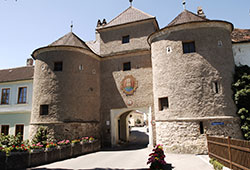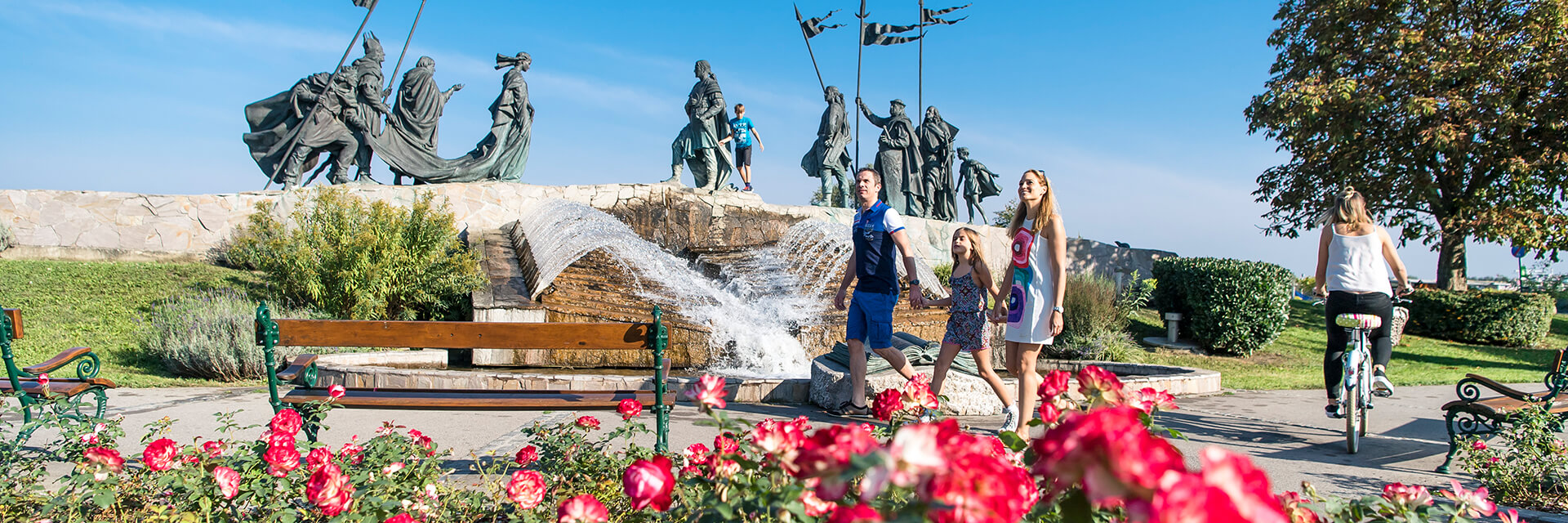Roman traces and historical sites in the region
This region along the Danube has many an exciting tale to tell.
People have been settling in this fertile stretch of land for millennia. Burial mounds and finds are witnesses to those days long past. The mysterious erdstall tunnels in Grossriedenthal, later used as shelters, attest to the long history of settlement here.
Roman reminiscences
For the ancient Romans, the land was strategically valuable. The Danube formed a natural border, the Limes, between the Romans and the German “barbarians” to the north. As a result, large Roman forts sprung up all along the Danube and with them, cities.
Two millennia ago, Tulln was a Roman cavalry fort called Comagena. Today the multi-story Roman Tower, aka Salt Tower, can still be seen, along with the original finds and pictures on display in the Roman Museum Tulln.
Finally, the mighty Roman Gate and Hunger Tower in Traismauer bring to mind the Roman cavalry fort called Augustianis. The burgus and remains of the fan tower in Zeiselmauer, formerly Cannabiaca, also bear witness to the Roman times.
The alchemist of Oberstockstall
In a room adjoining the chapel in Oberstockstall Castle, an accidental find was made in 1980: the inventory of an alchemy-metallurgy laboratory from the mid-16th c.
The find is an historical sensation and considered the most significant discovery of an alchemy laboratory in the world. The alchemist from Oberstockstall must have been a highly versatile metallurgist.Many of the exhibits are shown in the “Altes Rathaus” museum in Kirchberg am Wagram.
Legends and myths
Legend has it that a huge mischief of rats once befell the Korneuburg grain markets. The town was saved by a flutist who lured the rats to the Danube, where they drown. The man was not given the reward he had been promised. A year later he lured all the children of the city to the river and abducted them. The Rat Catcher Fountain in front of the city hall serves as a reminder of this legend today.
According to the veil legend of Klosterneuburg, monastery founder Margrave Leopold III and his wife Agnes were out riding on Leopoldsberg on their wedding day when a gust of wind swept away her bridal veil. It flew away and could not be found. Nine years later, Leopold found the veil, white and intact, and ended up founding Klosterneuburg Abbey on this same spot.


